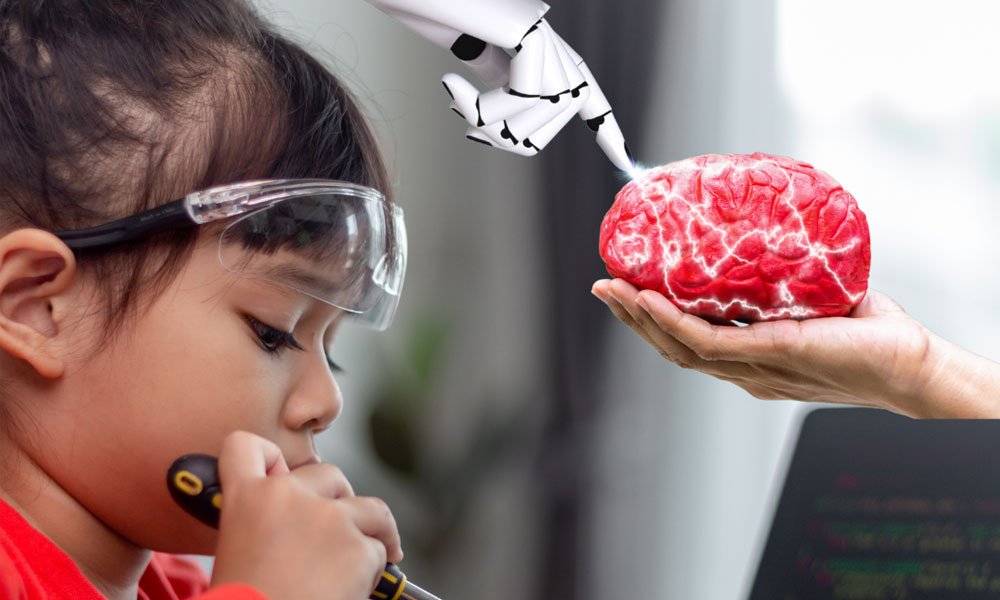
Will Human Input in Education Ever Be Replaced?
Since it exploded into the public sphere in late 2022, most of us are aware of the existence of generative AI like ChatGPT, Bing, and Bard. To those not working in tech, it seemed to be everywhere all at once. Most schools and teachers quickly panicked as they realized that these tools were instantly accessible to students with no guard rails in place to prevent their use.
In an attempt to get ahead of the issue, many schools banned it outright. However, unless schools were prepared to switch to solely in-class assessments or police student technology use to incredibly invasive degrees, a consensus was soon reached that there was very little schools could do to prevent its use. Many of the early bans were rolled back quietly a few months later.
Now, we’ve reached a temporary truce. Schools are aware that most, if not all, of their students will be using these AI tools. Students know that while models are improving daily, they still aren’t perfect and can only perform as well as the prompts they’re given.
With generative AI tools advancing by the day and companies like Khan Academy introducing AI-assisted educational tools like Khanmigo, it’s far past time to think carefully about how we want to use these AI-powered tools in our classrooms.
How are our Kids Experiencing AI in Education Now?
A recent survey from the Center for Democracy and Technology in the United States provides a good snapshot of how students and teachers are using generative AI technology today.
Students
- 58% of students have used generative AI at least once.
- 23% of students have used it for schoolwork.
- Among students with an IEP or other learning plan, 72% have used generative AI.
Teachers
- 90% of teachers believe their students have or probably have used generative AI.
- Only 63% of teachers are aware of their school’s policy on generative AI.
- 57% of teachers have received no formal training on the use of AI in the classroom
This data shows that while many students admit to using generative AI to assist in their schoolwork, a far greater number are focusing on using it outside of the classroom. Additionally, the majority of teachers are not trained in the use of this technology, and an even greater number are not even aware of their own school’s policy governing its use.
What Does This Mean?
This data shows a clear gap between students who are using generative AI and teachers who don’t understand how to handle it in their classroom. Teachers, parents, and mentors need to step up and start familiarizing themselves with this technology, leaving aside ‘AI detector’ tools, which have been plagued by false positives and inconsistencies.
Many savvy educators and tech evangelists have long said that AI will not replace humans in any field. Instead, workers are most in danger of being replaced by another human who can use these tools.
How Teachers Can Use AI to Support Students
These AI tools will never replace the warmth of the human touch in education. However, they can be used to take care of some of the least appealing aspects of working in education, giving teachers more free time so they can spend it with their students.
Here are some ideas of where to start.
1. Tools like M-Powering Teachers uses natural language processing to evaluate teacher performance in the classroom. The tool uses metrics like the student-teacher talk ratio to offer an impartial evaluation of the teacher’s classroom instruction, along with tips for how teachers can improve. This unbiased feedback can be given as often as the teacher wants.
2. Generative AI now allows teachers to generate sample lesson plans so they can start with ideas instead of from scratch every time. This saves time and helps teachers incorporate new ideas they may not have thought of before.
3. Instead of starting weekly or monthly newsletters, report card comments, or letters home from nothing, generative AI lets teachers input parameters and then spits out a first draft. This first draft will need to be customized and tweaked, but it can help save time getting started.
Teachers + AI = Endless Possibilities
Human input in education will never be replaced. However, its use will likely continue to grow in school systems worldwide. Without proper preparation, it’s easy to feel overwhelmed by this possibility.
To harness these tools to benefit both yourself and your students, teachers must first be comfortable with them outside the classroom. Explore them in your prep and downtime, and think about how they could be useful in your work. Then, use the innate kindness, patience, and empathy that’s ingrained in you to make the product of these tools your own.
Explore the resources on my website to learn more about how changing trends in education today impacts our girls.

